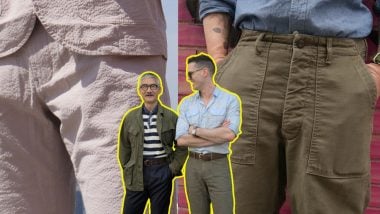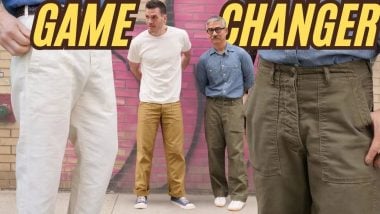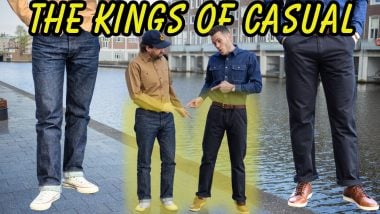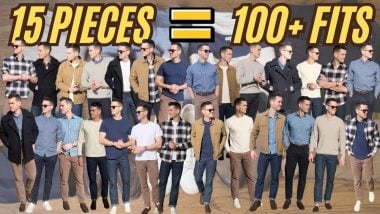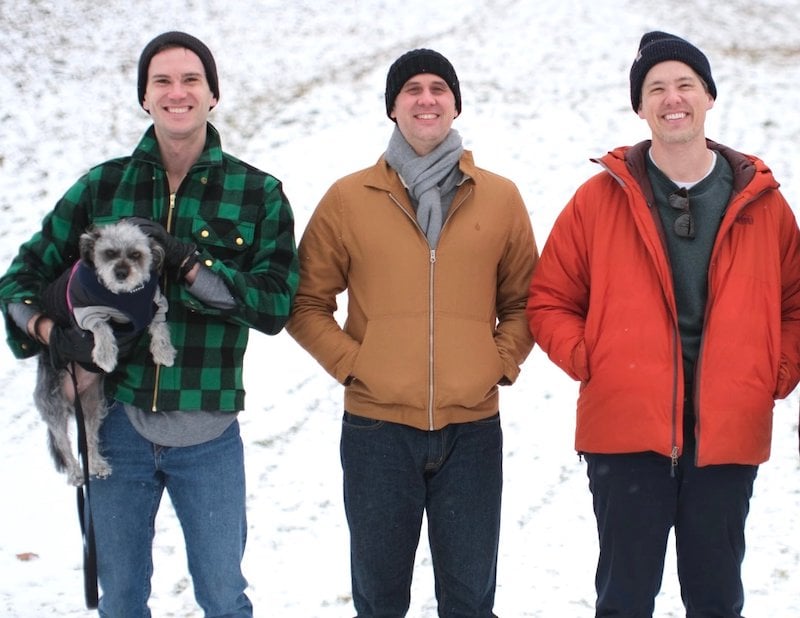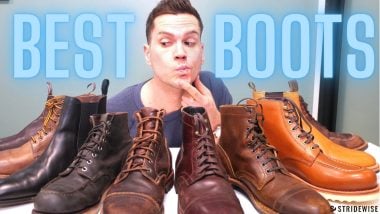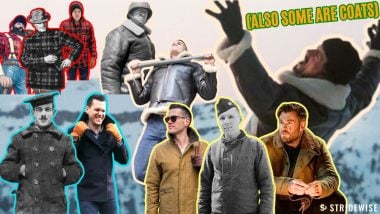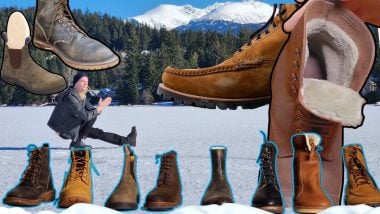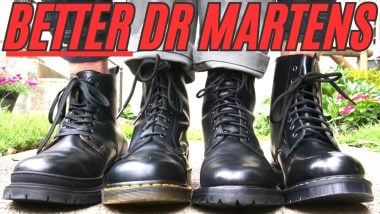Inside Left Field NYC: The Underdog of USA-Made Denim and Workwear
I moved recently from Manhattan to Queens, and at the very top of my list of places to visit — where it’s actually been for many years — was the raw denim and workwear mecca: Left Field NYC.
You might notice their Kelly green stitching, which is one of their trademarks. I’ve been wearing their brown canvas pants for a long time now, and I also have one of their (discontinued) Irish tweed coats, but what they’re best known for is their 100% American-made, 100% cotton raw selvedge denim.
So let’s meet the founder, Christian McCann, and find out how this all became so important to him. The video of the trip is below, and below that, there’s a transcript of the interview!
Stridewise (SW): Christian, thank you for having me in your store.
Christian: Pleasure, Nick. Thank you for coming out.
Stridewise (SW): What is Left Field NYC all about?
Christian: As a brand that’s doing heritage-inspired or vintage-inspired clothing, it was hugely important to have our products be made in America. It’s an authenticity factor for us. The country of origin has a lot to do with the heritage experience and the culture.
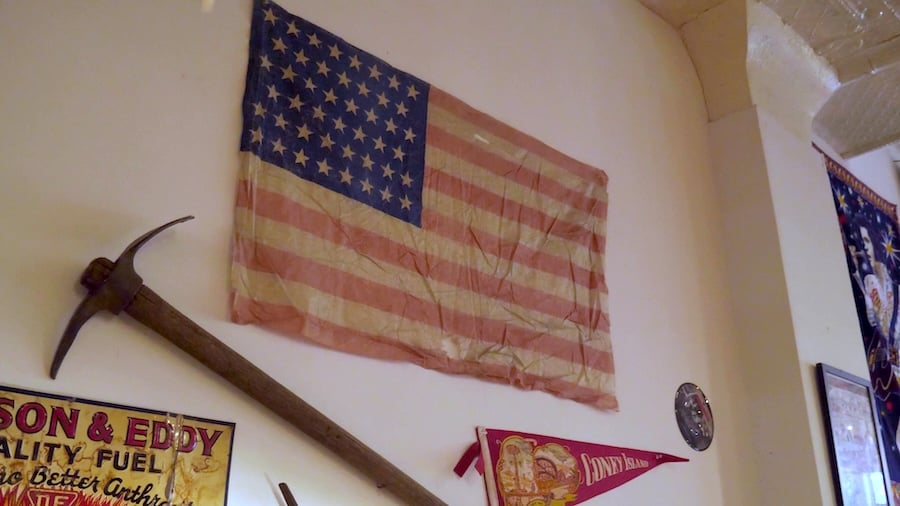
SW: Yeah, especially because so many of these aesthetics originate from the United States. Like, the jean itself was patented in the U.S. Why did you want to open a store that operates in the vintage-inspired space?
Christian: My parents were always into antiques, and we used to go to a lot of vintage flea markets. For me, there was that constant, amazing experience of looking at old antique things that were built beautifully. The aesthetic was so much better, the quality of the materials, the paint, the patina — all these things just stood out as better.
SW: A lot of people get inspired by vintage apparel and start a brand in suiting, or preppy clothing, or smart casual stuff.
Why did you instead gravitate toward vintage workwear — canvas, denim, and designs that people used to wear for manual labor?
Christian: I grew up wearing Lee and Levi’s, so I didn’t really grow up with raw or selvedge denim. Eventually, one of my past jobs started me down the wormhole of Japanese fashion, Amekaji, and so on. It made me aware of the special things that in America we weren’t even aware of or took for granted, but the Japanese had a deep appreciation of.

As you get more into it and understand the details like characteristics of the weave, the slub, the natural indigo versus synthetic indigo… There are so many different variations and histories.
For example, we use Mount Vernon Mills in Georgia for our canvas. They started out making sailcloth in 1850 — when the stuff was beautiful, cool, and had style.

SW: And it was unpretentious, too. Because it was workwear.
Christian: It was just a working man’s clothes.
SW: You seem to have a bigger emphasis on the American aspects of heritage apparel than a lot of the other brands, which will include more stuff made in Japan or they’ll be more drawn to fabrics from all over the world than keeping things strictly American.
Christian: To us, committing to “made in America” was going the hard route, because it’s actually easier to make things in Japan! In America, you have to teach the workers, the artisans, the more old fashioned ways of making things. A lot of times, the things that they think are right are actually what we don’t want.
SW: You like the more time-consuming ways of making things! Like, the shuttle looms that make selvedge denim work ten times more slowly than modern looms.
Most companies would go with the faster and cheaper way of making something — that’s the whole ethos of most businesses. But you actually have to teach people to make things more slowly and less efficiently.
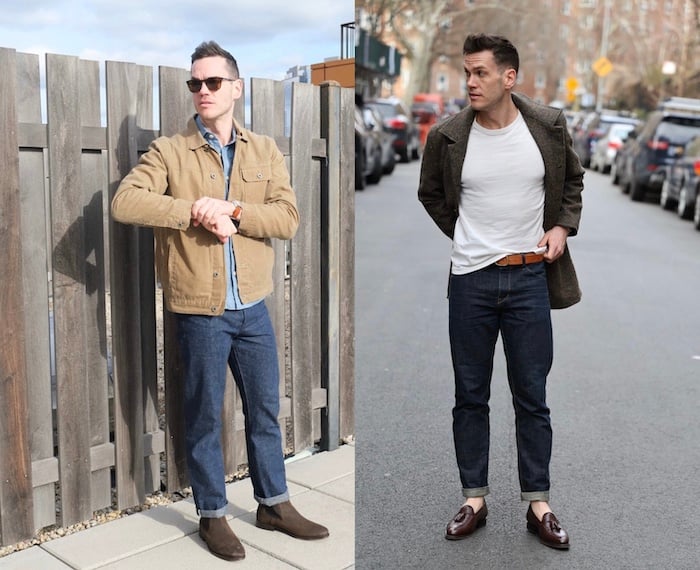
Christian: Also, we think workwear should be affordable to someone who actually works. We offer labor union discounts for our workwear collection to make it a bit more affordable for people who are comparing it to Carhartt, which is made in China, mass-produced, and sold at Walmart.
SW: I’m interested in this overlap between “workwear” and workwear. These days, what guys wear to work usually has some elastane for comfort, Gore-Tex for waterproofing, or other synthetic fabrics. The kind of workwear you sell, though, is usually just made with cotton.
Sometimes you get asked, Is “workwear” really workwear? I tend to think this stuff as heritage, minimalist, or classic rather than really valuing the “workwear” nomenclature. But you really do try to target your products at people who use them to work?
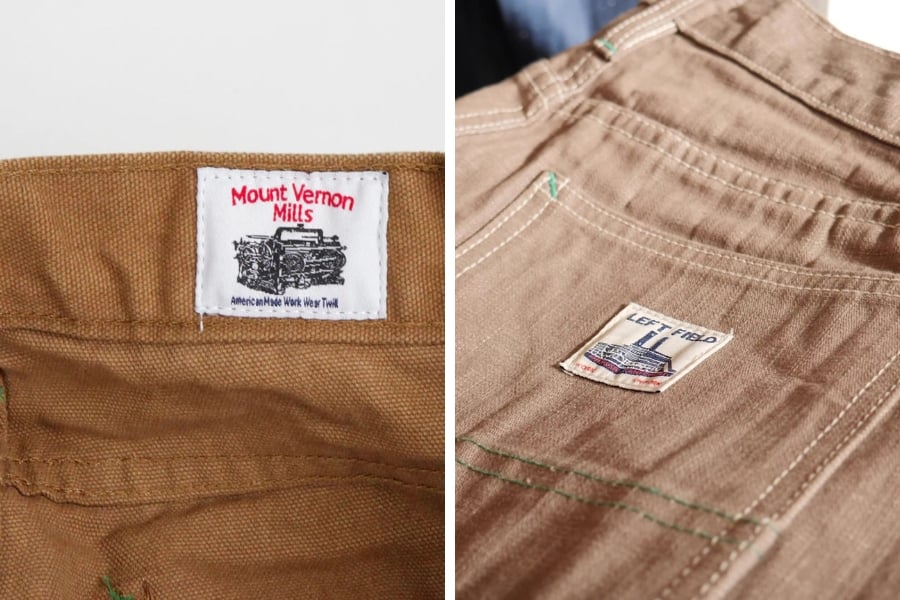
Christian: We’re not trying to be posers and create something only for rich kids who want to dress up and cosplay workers from the ‘40s or ‘50s. We want our clothes to be worn by steelworkers, carpenters, and all kinds of other people who do hard manual labor. It’s important for us to have our stuff hold up to hard work.
We had a customer who puts windows up in high-rise buildings. He was actually wearing Mount Vernon canvas when one of the blades took off. It shot out, hit the inside of his pant leg, and the blade caught in the canvas and stopped.
If it didn’t stop there, it could have cut through one of his biggest arteries, and he would have bled to death.
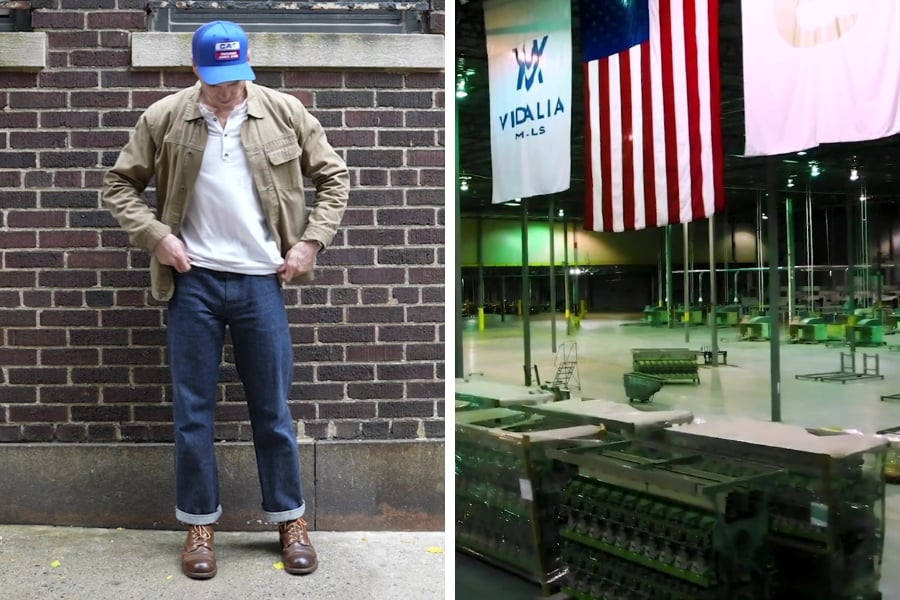
SW: Tell us more about these American mills that make your fabrics. Workwear-style apparel is canvas and twill, canvas and denim. The canvas is from Mount Vernon in Georgia, the denim is typically from Vidalia in Louisiana, is that right? And that’s the last place in the US making selvedge denim?
Christian: That is, and they’re using the original Draper X3 looms, shuttle looms from the Cone White Oak factory, which is important because there are a lot of rumors going around saying that those looms were going to get junked by Cone White Oak. Luckily, Vidalia did acquire all the looms. I think there were 32 Draper X3s.
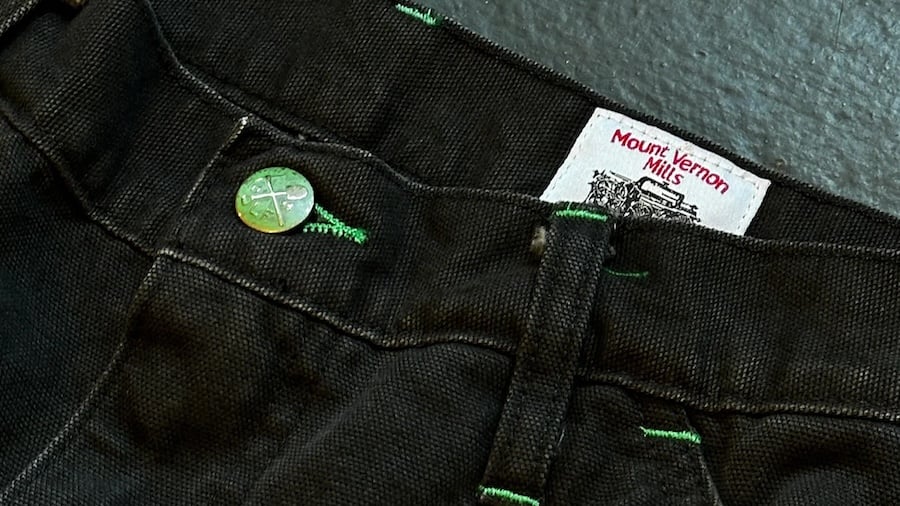
SW: There is a lot of crossover with guys who like heritage vintage workwear and guys who like sustainable apparel. They’re different, but the same. Is sustainability a value for you, or is it something that happened to come along with an interest in vintage workwear?
Christian: Anytime that you’re dyeing, finishing, or enzyming, you are creating more chemicals in the environment. So a lot of our stuff is raw, which is part of sustainability, because we’re not making additional wastewater for our country to deal with.
SW: Yeah, I went to a jeans fading factory this year and there really is a remarkable difference between raw and non raw denim. A lot of jeans that aren’t raw are washed for hours and hours, over and over again.
Christian: The other interesting factor is that Vidalia uses all locally-grown cotton. We try to incorporate as much of it as we can. We also use sustainable recycled cotton — we’ve done a lot of socks with recycled cotton.
SW: I’ve been following Left Field from afar for a long time. You have four fits. I’ve always been curious as to how they actually look in person. Can we see how they look?
Christian: Let’s do it.
Left Field NYC’s Jeans Fits: Greaser, Smokestack, Chelsea, Atlas
SW: These jeans are the Greaser (straight fit), right? I feel like that’s your most popular fit.
Christian: Compared to Levi’s, it’s similar to a 501 fit, your basic “straight leg.” These are a classic all-around fit, and this is pretty much what many people default to.
The leg opening is not too tapered, it’s just a slight taper from the knee down and it can fit over a boot. I wanted to make sure it will even fit over cowboy boots. Everyone’s rocking cowboy boots right now.
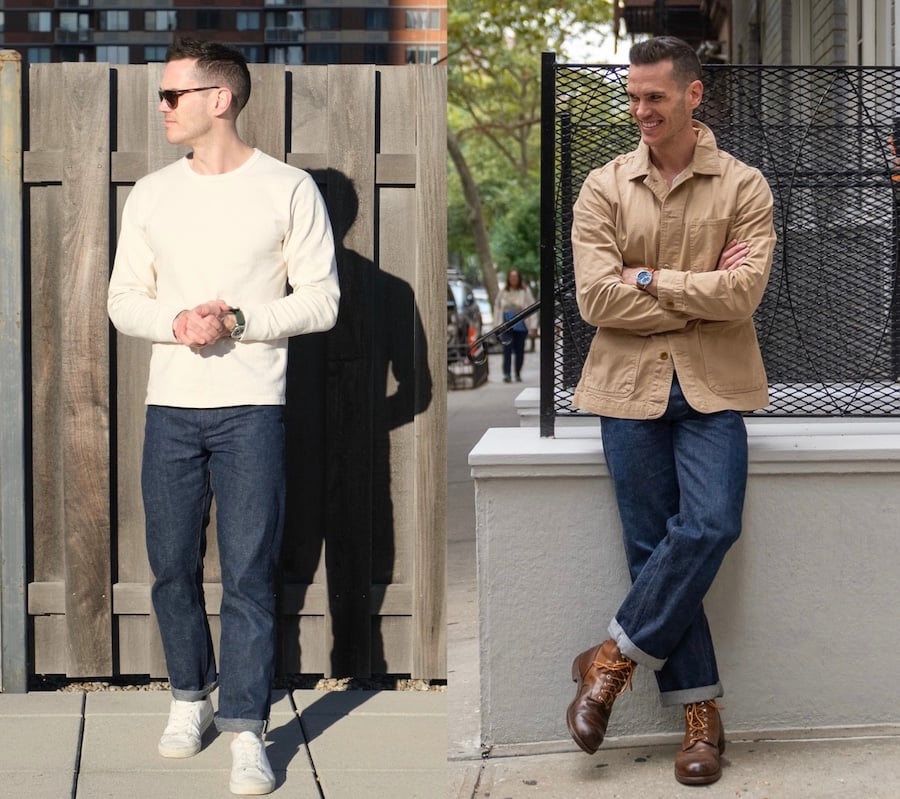
SW: What’s the Chelsea fit about?
Christian: Named after the Chelsea Hotel. They have a kind of rocker/slim fit, but not skinny fit. We don’t do a skinny fit, but it’s tapered and slimming in the knee all the way down to the leg opening.
SW: It’s slimming the thighs as well, but it’s not a relaxed tapered fit.
Christian: Slim fits like the Chelsea are probably is less in demand right now, with everyone going with wider legs, but it’s that classic rocker look.
SW: For your wide leg cut, that’s the newer Smokestack fit?
Christian: Yes — it’s more like a ’40s/’50s cut. It’s not trying to be JNCO wide like what kids wore in the late 90s. It just gives you a little extra room and that cool bit of extra wideness. You can fit them over any boots and even do a crease in the front. It looks cool.
SW: That is cozy. This is actually the one that I have.

SW: Your other fit is the Atlas, that’s the athletic fit?
Christian: It’s just mostly for guys with big thighs, inspired by Charles Atlas.
SW: A lot of times brands will make “athletic cuts” and say it’s for guys who lift, but they’re low key for guys who have big thighs because they have a big waist. Athletic guys will often buy athletic cuts that fit their legs but are too loose at the waist, but I was impressed when I saw that wasn’t the case with the Atlas.
Christian: If you pull the jeans inside out, you’ll notice that the selvedge is cut right about to the bottom of the thigh. If we ran the selvedge all the way up, it would be like a size 40 inch. We cut it inward from the wide leg to taper to the slimmer waist.
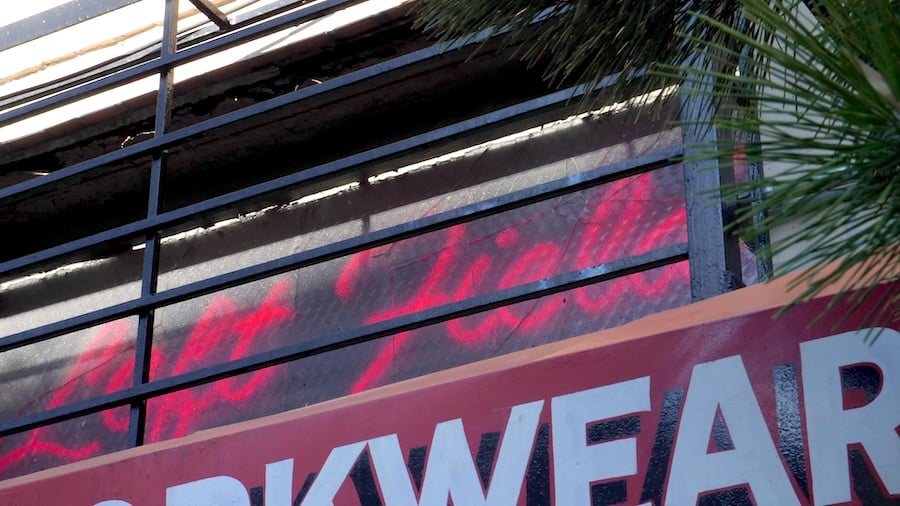
SW: Thanks for having me in your store today.
Christian: Pleasure, Nick, thanks so much for coming all the way out from Long Island City.
SW: Yes, I have a lot of Queens pride, and I’m going to make the pilgrimage out here more often, and get a lot more canvas while I’m at it!
Visit Left Field NYC here — or in Queens, if you’re willing to make the trek to Ridgewood!

